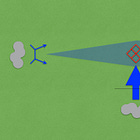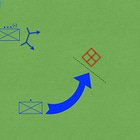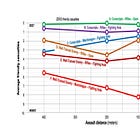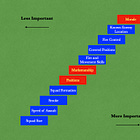With this article, the Tactical Notebook concludes the serialization of Three Hundred Assaults. Written by Lieutenant Colonel Brendan McBreen, USMC (Retired), Three Hundred Assaults explores the results of an ambitious program of simulations, each of which depicted an assault conducted by a Marine rifle squad. The first six posts in this series can be found by means of the following links.
6. What is to be done?
Hundreds of Marine leaders—as we learned from our surveys, discussions, and simulated battles—have very advanced understanding of how to conduct an assault. They know good tactics, techniques, and procedures (TTPs) —what to do on the battlefield, what to look for, and what to avoid—and they have trained their Marines on these critical skills. They have thought deeply about the details of these tactical problems and have developed strongly held opinions, insights, priorities, and procedures.
But much of their knowledge was acquired on their own, from peers and mentors, informally, in training and in combat. In most cases, they will admit, the institution provided only partial instruction and insufficient published guidance. To benefit all Marines for the long term, we need to:
a. Improve our manuals. The manual drives the training standards that steer the schools that prepare our leaders. Leaders then conduct unit training to prepare for combat. The manual, however, is the bedrock, the foundational document that describes how we fight and explains best practices. Why do we not prioritize manuals? Excellent manuals should replace all the mediocre student handouts across our schools.
We have combat-experienced Marines, skilled instructors, a history of success in battle, and tactically savvy commanders. During this experiment, we learned more about the assault from talking to thoughtful, professional Marines than we ever learned from any published guidance. Capture this expertise! Appendices D through I are a series of recommended improvements to MCRP 3-10A.4 Marine Rifle Squad. We need to improve our manuals.
b. Train with simulations. Every month, every leader in the Marine Corps, across all MOSs, should make an estimate of a situation, make a tactical decision, and fight. Simulations provide tremendously realistic training for leaders. Unlike much unit training, simulations provide immediate feedback while encouraging practice, repetition, experimentation, and internalizing lessons on what works. Simulations are convenient and available, and augment training in ways that cannot always be replicated in the field.
c. Use simulations to improve our manuals. Marine Corps manuals that teach tactics—how to fight—would benefit from combat simulation insights. Wargaming, often used to test concepts, should also be used to improve our TTP publications. Manual writers would benefit from simulations. Illustrators would benefit from simulations.
The 300 assaults conducted during our experiment all examined a very narrow tactical problem. Yet the feedback was tremendously rich, identifying challenges and solutions, and raising questions that our previous training and deployments had not uncovered. Decisions on casualties plagued the squad every time. Combining teams and fighting with short units is rarely trained. In simulation, Marine leaders are faced with unique combinations of factors and complex situations that require decisions that they have not faced before. These need to be captured and published.
Fighting a simulation provides insights, not proof. Yes, many lessons were obvious. Some lessons confirmed our tactical techniques, and some lessons reinforced the importance of techniques that we had been taught and not practiced. But some lessons were surprising and counterintuitive—and forced us to develop new tactics. Most importantly, some of these lessons could not be learned outside actual combat. The two critical concepts of suppression and effective cover are not easily trained or emphasized when no one is shooting at you.
Thoughtful critics argue against the artificiality of computer simulations. The terrain and the enemy are fake. The weapons, ranges, rounds, trajectories, and effects are all simulated. The leadership, morale, and exhaustion levels of the simulated enemy soldiers are just numbers. But the challenges are real. Your thought processes—your estimates of the situation, analyses of the enemy, evaluation of options, and tactical decisions—are exactly the same as they are in real life. What goes on inside your head, your tactical decision making, is authentic regardless of where or how you conduct the training. As Marine John Schmitt famously said, “Cognitive fidelity is more important than physical fidelity.”
Some skills are difficult to train. After dozens of assaults, the lethality of enemy fire forced us to look more carefully at the terrain. Half of tactics is dirt. Professionals understand that reading the ground makes squads successful in combat. But how do we train our leaders? This is not map reading. Only when someone is shooting at you, and your nose is in the mud, do you really start to value micro-terrain. Evaluating, selecting, and exploiting the dirt is a leadership skill, but only superficially mentioned in our manuals and training handouts. Mistakes can be deadly if you are exposed to enemy fire in the open. It is impossible to teach this in the classroom or on ship, yet critical on the battlefield. Simulations can help teach skills that are difficult to train elsewhere.
What can we learn from simulations? A great deal. Simulations can improve our manuals, improve our TTPs, and improve the training of our small-unit leaders. Simulations can shift the emphasis of what we teach, away from sterile multiple choice definitions and control measures and more toward real-world, dynamic procedures for how to fight on actual terrain. We all seek better guidance. We should start small, with the basic tactics of small-unit combat. Strong squads make strong platoons which make strong companies.
“Train your squads. Bricks are more important than architects.”
– B.B. McBreen
Acknowledgements
The author would like to thank the following people:
Arnel David and Gregory Pickell of the U.S. Army and Fight Club USA.
Edward Farren and Andrew Elliott of the British Army and Fight Club UK.
U.S. Marines John Auer, Geoff Ball, Garrett Boyce, Michael Breslin, Quentin Dickey,
Nicholas Duncan, Gregory Jamero, Kyle King, Grayson Lee, Zachary Schwartz,
Thomas Simpson, Chad Skaggs, Eric Todorski, PJ Tremblay, Matthew Tweedy,
and Daniel Villalobos.
Note on Illustrations: The work of Kristopher Battles, the paintings and sketches used in this series come from the Marine Corps Art Collection.











Great series of articles, and a very admirable effort at trying to get some rigor behind small-unit tactics.
Now, can we do this for a platoon?